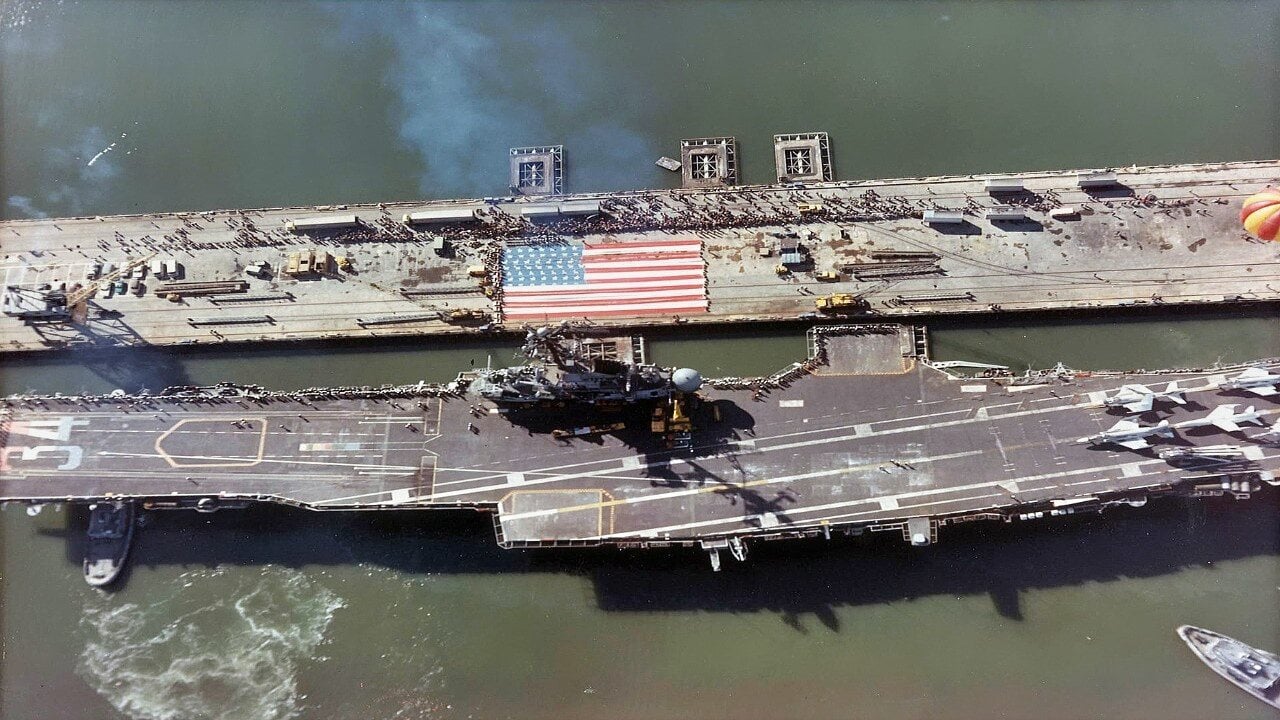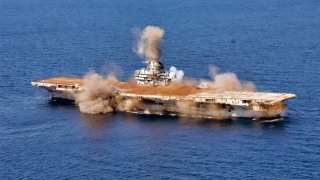USS Oriskany: The Navy Aircraft Carrier 'Sunk' To Create an Artificial Reef
The USS Oriskany, a retired World War II-era aircraft carrier, was intentionally sunk in 2006 near Pensacola, Florida, to create the largest manmade artificial reef.
Summary and Key Points: The USS Oriskany, a retired World War II-era aircraft carrier, was intentionally sunk in 2006 near Pensacola, Florida, to create the largest manmade artificial reef.
-After extensive environmental studies and preparation, the Navy led the operation, placing 500-pound charges in strategic locations to sink the vessel. Now resting upright under 210 feet of water, the "Great Carrier Reef" has become one of the world's top wreck diving sites, offering a unique underwater experience for divers.
-However, entering the ship is strongly discouraged due to potential hazards.
From Aircraft Carrier to Reef: The Remarkable Transformation of the USS Oriskany
Today, you can visit many of America’s retired warships, in ports and rivers, where the vessels, now past their prime, have been converted into museum pieces, ready to host an endeared public. The USS Intrepid aircraft carrier sits in the Hudson River, a staple of the country’s most populous city, New York.
The USS Texas battleship greets visitors in her namesake state. The USS Blueback submarine lurks along the Willamette, peaking out at bikers and strollers in Portland, Oregon.
But if you want to visit the USS Oriskany, an aircraft carrier laid down at the end of World War II, you’ll have to venture beneath the surface, where the flattop rests, as a manmade artificial reef.
Sinking the Oriskany
The Oriskany was the first warship that the United States has ever sunk to create an artificial reef – and the largest. Capable of displacing 31,300 tons, the Oriskany measured 888 feet long with a 129 foot beam and a thirty foot draft. The ship sailed with a complement of 2,600 sailors and could carry as many as 103 aircraft. Four steam turbines turned four screw propellers for a top speed of thirty-three knots and 14,1000 nautical miles. All of it now rests on the ocean floor, near Pensacola, Florida.
Before sinking the Oriskany, exhaustive studies were conducted to gauge the ecological and human health impacts of the sinking. The Environmental Protection Agency (EPA) was consulted and concluded that the sinking would be safe. The EPA approval was delayed, however, thanks to 750 pounds of polychlorinated biphenyls found in the insulation layers of the Oriskany’s electrical cabling.

The Oriskany was to be sunk on May 17th, 2006. The Navy would lead the operation, with the help of the Florida Fish and Wildlife Conservation Commission (FWC), the US Coast Guard, the Pensacola Police Department, and various entities from Escambia County. Five hundred pound charges of C-4 were placed in twenty-two locations around the ship, on sea connection pipes for maximum impact. The explosives were detonated, and after thirty-seven minutes, the Oriskany sank stern first. The flattop’s final resting place was upright, under 210 feet of water in the Gulf of Mexico.
“The Oriskany is sitting upright on the seafloor in a north-south orientation with the bow facing due south,” the Florida Fish and Wildlife Conservation Commission reported. “The uppermost structure of the Oriskany is located at Latitude thirty degrees two minutes thirty-three seconds north…Longitude eighty degrees zero minutes twenty-three seconds west.” And of course, the FWC recommends that divers should not enter the ship under any circumstances due to the ship’s interior and the unknown extent of structural damages caused by the reefing process and natural changes over time…there is nothing inside the ship worth dying for!
The reef is phenomenal. The Times of London called the Oriskany wreck one of the world’s top ten wreck diving sites. Today, the site is popularly known as the “Great Carrier Reef.”
About the Author: Harrison Kass
Harrison Kass is a defense and national security writer with over 1,000 total pieces on issues involving global affairs. An attorney, pilot, guitarist, and minor pro hockey player, Harrison joined the US Air Force as a Pilot Trainee but was medically discharged. Harrison holds a BA from Lake Forest College, a JD from the University of Oregon, and an MA from New York University. Harrison listens to Dokken.
Image Credit: Creative Commons.


